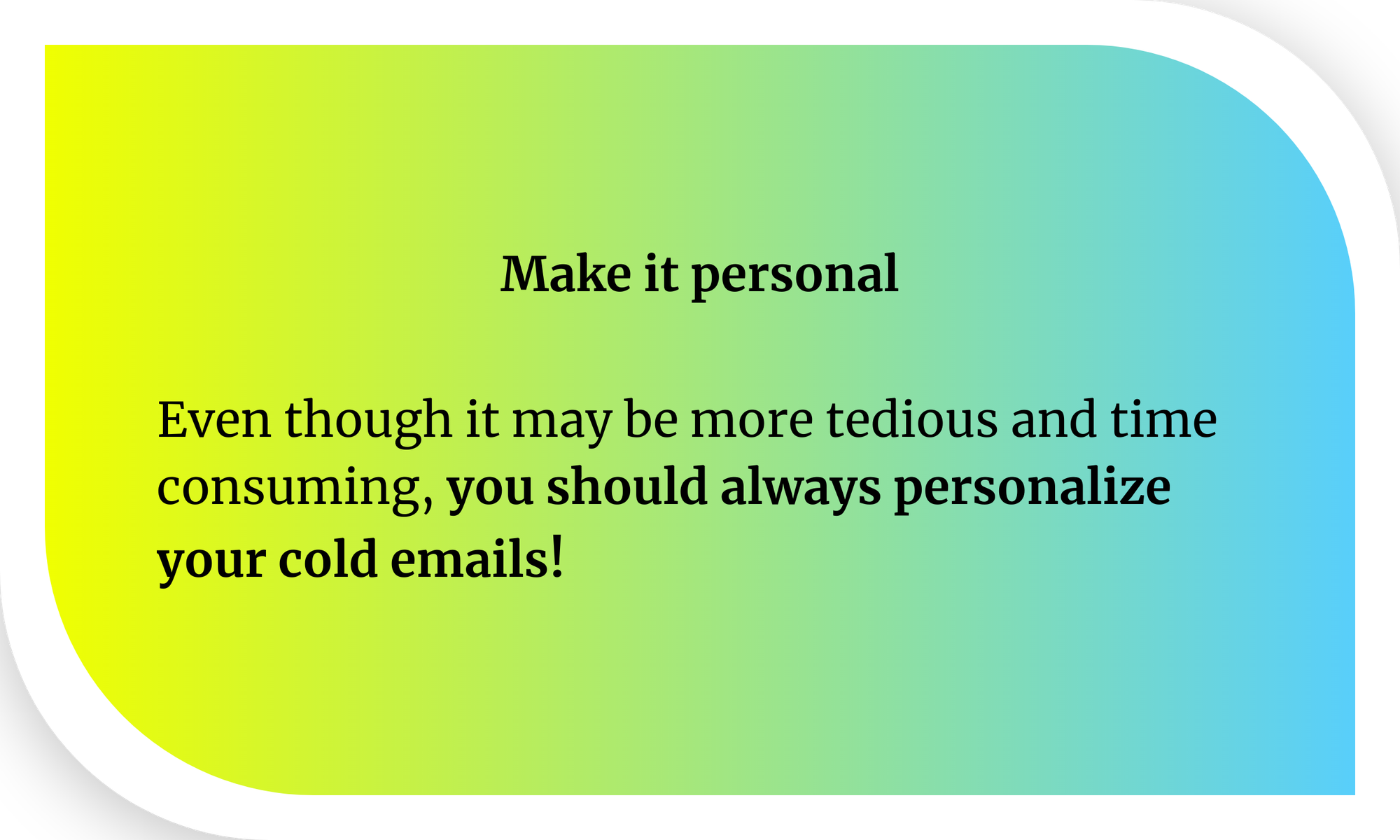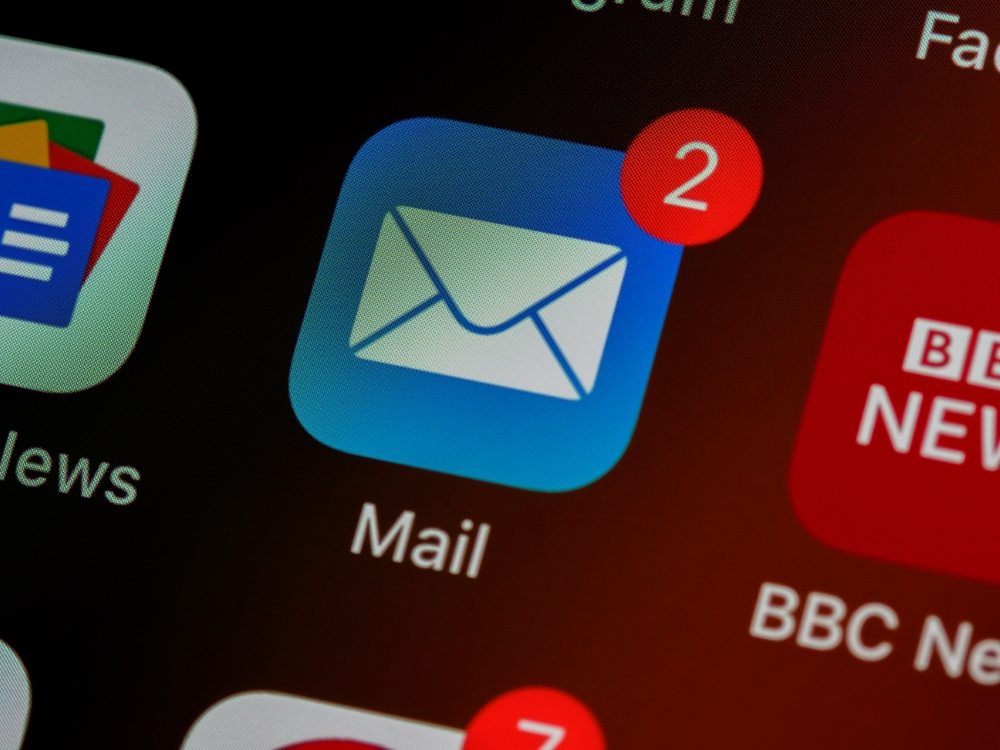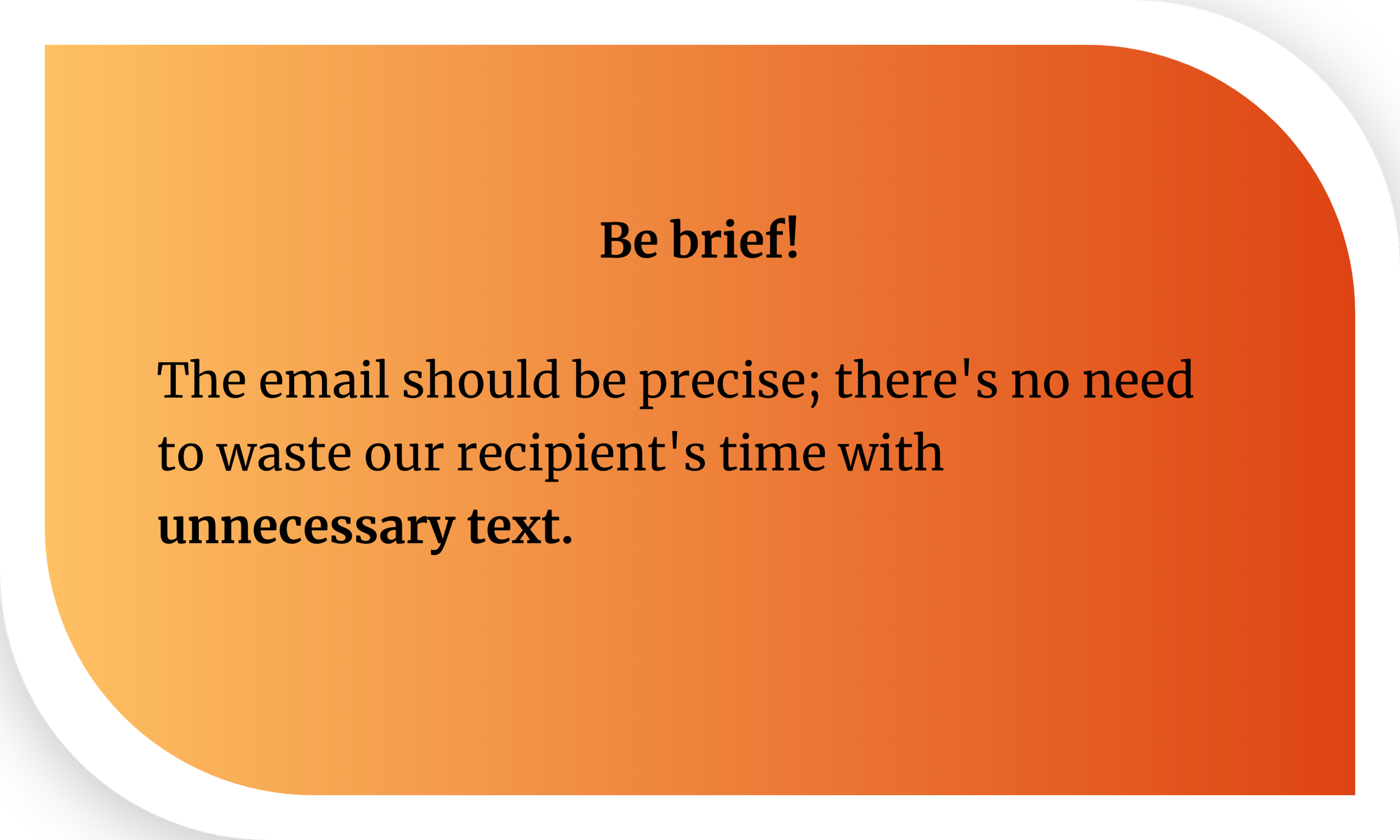Cold Email Marketing Tips & Tricks

When I started my first project, Iconshock, we had minimal investment, and there were only two of us working on both the website’s development and infrastructure, as well as the design of the icons. Additionally, we had to handle administrative and marketing tasks.
When resources are so limited, you have to be innovative and try to reach out to others, and that’s exactly what we did. We manually and personally contacted many other designers, programmers, writers, editors, and content creators, not only to promote the project but also as a genuine way to connect with them and build a community. The results were astounding, and in no time, we were featured on many blogs, magazines, and media outlets related to iconography and design in general.
From that moment until now, after almost 20 years of experience, we have applied and perfected this strategy, and we can confidently say that it is one of the most effective strategies for promoting new projects. Probably one of the most underrated too.
An email sent to the right person can mean the signing of a million-dollar contract or getting your project, story, or product featured in the media, giving you the initial boost and sales you need to get started or the initial traction to secure investment.
Also, did you know that over 60% of people prefer email as a way of being approached by a new company versus social media ads or phone calls? Cold emails, when done properly, can be a very effective channel to connect with the right people at the right time, and can make all the difference for a newly launched startup.
In this article, we have compiled the most important aspects and recommendations to consider to make this strategy successful.
Avoid Using Automation Tools; Emails Should be Sent Manually.
Mass email automation tools are not recommended for handling cold email campaigns, as they are designed to send mass emails to recipients who have previously opted in to receive such emails, known as opt-in users. When sending a mass email, you should include an identifier in the email headers indicating that it is a bulk email.
Additionally, you should include the unsubscribe link as a header. This is particularly relevant in Gmail, which uses this information to correctly classify the email into specific folders in the inbox.
Usually, automation and mass email sending tools include these types of labels in the headers of emails sent through their systems.

Design created automatically with ByPeople Composer
Marketing is telling the world you’re a rock star. Content Marketing is showing the world you are one. – Robert Rose
For cold email outreach it is quite likely that recipients have not given explicit permission to receive emails (hence the term “cold emails”). When written and sent manually this type of email should not be marked as bulk email because it clearly is not. However, if sent with automation tools, labels or characteristics identifying it as bulk email may be added, which could lead to detection by the algorithms used by email companies and result in being marked as spam.
Google is particularly strict in this regard, and its algorithm can easily detect such automation tools. Lately, we have even seen some automation tools include warnings that their systems may be detected by spam algorithms because unauthorized mass email sending is not allowed in the terms and conditions of most email management companies.
But there’s much more to gain from personalizing your cold emails. As if avoiding spam filters wasn’t good enough, personalized cold emails have open rates ranging between 2-3 times higher than the generic “spammy” emails!
Taking this into account, the conclusion is clear: the only safe and effective way to send cold emails is to do it manually, one email at a time, giving it the necessary personalization to avoid being marked as spam. Moreover, with this personalization, you can ensure that the emails actually reach the inbox and, most importantly, are read and responded to by the recipient.
Obviously, this process involves investing more time in writing and sending emails, but it is something that is practically inevitable for success with a cold email campaign. Therefore, it is much better to have very well-selected recipients to receive the emails. Quality is much better than quantity.
Even Though its Tedious, You Should Personalize Your Cold Emails.
We understand the reasons why it’s highly recommended not to use automation tools, but in addition to the risk of our emails being marked as spam, there’s a key factor to consider: if we write personalized emails one by one, without automation, the open rate for these emails increases significantly. It’s important to keep in mind that the first and perhaps the most crucial step in a cold email campaign is that, after avoiding the spam folder and reaching the inbox, our recipients actually open and read the email we’re sending them; otherwise, our efforts would be in vain.
When we personalize our emails, we gain several advantages:
- The chance of landing in the inbox increases, because we’re not sending the exact same text in repetitive emails, which can be detected by email management systems. As mentioned, to send a mass email, the user must have previously accepted such delivery (opt-in).
- Furthermore, our open rate for these emails increases because the recipient quickly sees that the email was specifically written for them, rather than being part of a mass email campaign that is easily recognizable by almost any user.
- Lastly, since we have to personalize our emails, we must write different emails for each user. This changes the sending rate of these emails, meaning the time intervals at which these emails are being sent, which helps spam management algorithms understand that we’re not sending mass emails. This, in turn, makes it easier for the emails to land in the inbox rather than the spam folder.
Personalization Starts with the Subject Line and the Sender.

Open rates for cold emails average around 20-30%, which is already considerably lower than emails to existing contacts that sit at a comfortable 50-60% open rate. To increase your open rates significantly you need to look at factors like subject line, sender name, and email content itself.
The subject line of the email is the first part that should be personalized, especially because it’s what the user is likely to read to decide whether to open our email or even mark it as spam without reading it, which could affect the delivery of all our subsequent emails or follow-ups.
The subject line should not be grandiose or deceptive and should avoid words that are typically associated with spam emails, such as “offer,” “money-making,” “unique opportunity,” and so on. Even when personalizing each email, these words, which are heavily used by spammers, can trigger flags and alerts in our emails.
The best way to think about how to craft the subject line is to consider how we can add a personal touch to it and thereby offer a distinguishable advantage without being overly exaggerated.
The advantage we offer in our subject line should be identifiable to the recipient, meaning generalized phrases do NOT work well, such as:
- “Unique Opportunity for Your Business” 👎
- “A Revolutionary New Product” 👎
Instead, the subject line should be identifiable and, if possible, personalized:
- “Joshua, Saw Your Quora Post Looking for Canva Alternatives” 👍
- “Mike, I Read Your UX Design Article, and There’s a Tool You Might Find Interesting” 👍
For example, if you are writing a cold email to a former customer, you could briefly remind them of your past business relationship, especially if they might not immediately recognize you, like this:
- “Sophia, You Purchased a T-Shirt Pack from Us; We Have an Offer You’ll Be Interested In” 👍
If you are sending an email to a writer, a magazine editor, an author, or a journalist, keep in mind that, along with business managers, these are the types of users who probably receive the most cold emails because many companies and entrepreneurs use the press as a means of promoting their projects. Therefore, it’s particularly important to be even more careful and thoughtful when reaching out to them.
Also, make sure you’ve personalized your “Sender” email address – sending cold emails from an individual’s email address instead of a generic email like “info@company.com” can improve open rates by up to 50%!
If Contacting a Journalist or Writer, Offer Stories; If Trying to Sell, Offer Solutions.
As mentioned, journalists, editors, and writers receive many emails daily, especially from companies looking to highlight their projects. However, and even more so if it’s a well-known publication, it will be difficult for them to even read your email, let alone be interested in what you’re offering. So, remember this as a rule: journalists are looking for interesting stories for their readers, expert opinions, options on specific and specialized topics, unique, touching, or amusing stories.
If you’re going to contact a media outlet, you should find the writer who covers topics related to your product and do the work of following them on social media, reviewing their articles, interviews, and opinions. It’s common for journalists to seek expert opinions via social media to contribute to their stories, and this is perhaps the best opportunity to catch their attention or learn how to draft the cold email for that specific user.
Here are some examples that can be useful for grabbing the attention of a written media outlet:
Instead of writing something like:
- “We’ve created a new web-based graphic design software.” 👎
The following sentence may feel more like an interesting story:
- “With minimal investment, we’ve developed an app to compete with the billion-dollar giant Canva.” 👍
In general, it’s crucial to know and understand in advance the topics and the way your recipient regularly writes to determine the approach of the cold email you want to send. Find out if they do product reviews, create lists of products, cover emerging product reviews, etc.
On the other hand, if you’re trying to sell your product, software, or service, you should offer a specific, well-defined solution to a pain point that the recipient genuinely has or can recognize. A quick way to find good prospects for cold emails is through the questions asked on sites like Reddit, Quora, X, StackOverflow, and more. If a user recently asked about a specific problem that your solution addresses, and you’re monitoring for new questions on that topic, it’s the perfect time to cold-contact that user and provide insights about the problem they’re trying to solve. You’re likely to make a sale or at least establish a connection with that user or company.
Write Short, Precise Emails with a Single Question or Request.

Design created automatically with ByPeople Composer
As a general rule, a first email to a recipient who doesn’t know us should not exceed 150 words. In fact, keeping it under 100 words is even better. Nowadays, people receive a lot of emails daily, and when writing to someone we don’t know, especially if we’re asking for something, it’s courteous to be very clear and concise in our message.
There’s no need to include our background or our resume, and it’s probably not interesting to know how hard we worked on the project (everyone works hard). If we believe our background or expertise is relevant to our recipient, we can make a brief mention of it, but that’s what the email signature is for. If the rest of the content is interesting, the recipient will check the signature on their own.
The email should be precise; there’s no need to waste our recipient’s time with unnecessary text. If we want to showcase an advantage, we can offer specific numbers quickly. For example:
- “Hi Mike, I’ve helped several companies increase their customer base by up to 50% in less than a year, and after analyzing your SaaS, I’m confident I could help. Are you interested?”
In addition to being precise, it’s crucial to ask a single question, one that can be answered quickly and is placed at the end of the email. It’s even better if the response is a simple “yes” or “no.” For example:
- “Are you interested?”
- “Would you like me to explain in more detail?”
- “Would you like to schedule a quick demo?”
These types of questions are easy to answer because they are not open-ended, and by asking only one question, our email will be easier to understand and, most importantly, to respond to. Once we get a positive response for a demo, a call, a meeting, or a request for more information, we gain an additional advantage: our email was definitely read, and subsequent emails we send are likely to land in the inbox. Moreover, if several recipients respond to the email, spam detection services will recognize that there is a response, indicating that we are not sending spam, which gives our other emails a better chance of being delivered.
Use marketing social proof.
The concept of social proof is a point of social connection that can be established with the recipient to make yourself easily recognizable. To do this, some research on the recipient is necessary. Some examples of social proof include:
1. Having worked or collaborated for the same company, even at different times. This information can easily be found on platforms like Polywork or LinkedIn.
Example:
- “Hi Nelson, I noticed on your LinkedIn that we both worked at company X, although at different times…”
2. Finding a connection with a recent action taken by the recipient:
Example:
- “Hi Virginia, I’m the lead engineer at XYZ, the app you recently reviewed.”
- “Hi Brad, I see that you recently purchased an icon pack from us; we have an offer that might interest you…”
3. Sharing a common city or geographical point.
Example:
- “Hi George, I see you’re from Perth; I lived there a few years ago.”
4. Having worked at a well-known company or on a highly recognized project that sets you apart from other emails.
Example:
- “Hello, I worked as a developer at Sony for several years…”
- “Hi Julia, I’m the creator of the popular app XYZ…”
Social proof, as we can see, is a common connection point that allows us to establish an initial rapport with the recipient. It also works because it gives a quick impression of email personalization.

Speak to your audience in their language about what’s in their heart. – Jonathan Lister
It’s not strictly necessary for all your emails to have some form of social proof, and it may be time-consuming to do so for every email. However, it’s especially advantageous for your most valuable recipients, such as company executives, potential clients, media editors, and so on. Remember that although searching for social proof can be tedious and time-consuming, quality matters more than quantity when it comes to cold emails.
How many follow-ups?
If you’ve followed all the recommendations in this article, it’s quite likely that your open rate is much higher than average, meaning there’s a greater chance that your cold email has indeed been read. If you don’t receive a response, it might be because the recipient simply isn’t interested.
The maximum number of follow-up emails you should send to a cold prospect should not exceed two, and one is often sufficient in most cases. As we’ve recommended, in addition to getting responses from your recipients, you should also protect your brand, domain, and email from being marked as spam.
A proper cold email strategy can be tremendously beneficial. In our personal experience, we’ve achieved a lot using this technique. However, it’s essential to follow these recommendations closely to get the most out of it!
Juan Pablo Sarmiento
System engineer from the National University of Colombia, with special interest over entrepreneurship, marketing, productivity and well-being.
Several projects and startups launched in over 20 years of experience.
Best Seller Deals
Check out time-limited deals on software and designs packs